The original description of the Google Sandbox Effect in 2004 was a new website that had gained some good SERPs suddenly lost them all and was sent to oblivion, sent to the sandbox!
Remember this Google Sandbox penalty description when reading a webmaster or SEO experts account of a Google sandboxed website in 2020.
The Google Sandbox Effect
- The Google Sandbox Effect is Born!
- What is the Google Sandbox Penalty ?
- Google Algorithm Updates & SERPs
- Is the Google Sandbox Ageist?
- Testing the Sandbox Effect
- SEO Link Building Delayed Benefit
- Why Doesn’t Google Trust Webmasters Anymore?
- How To Cope With a Sandboxed Site
- Google Sandboxed Penalty Update
A lot has been written about the so called Google Sandbox Penalty in SEO forums over the past 15+ years, but not much of it is backed by reality or SEO facts, SEO testing… most of it is guesswork. In 2004 Google had a major search engine algorithm update, this resulted in many new websites losing recent SERPs and increased difficulty in getting a new website ranked in Google.
Google makes a lot of algorithm changes, but this one hit a lot of websites and when that occurs the webmaster community on SEO forums etc… go a little crazy and before any SEO testing has even been devised let alone setup there will be a new SEO theory as to what Google is doing!
Google Sandbox 2020 update: Google stopped showing public PageRank over 5 years ago, when you see reference to specific PR values (like PR7), we no longer have access to that data. Closest data we have to PageRank/PR is MOZ DA/PA (Domain Authority/Page Authority). In 2020 webmasters use DA/PA as an SEO replacement for PR.
The Google Sandbox Effect is Born!
I’m sure you’ve heard the term correlation does not necessarily mean causation when researching SEO.
For example Amazon pays a lot of money on TV ads to increase brand awareness and Amazon ranks high for many Google search phrases. It could be argued there’s a correlation between TV ads and high Google rankings. No serious SEO consultant would argue TV ads causes high Google rankings!
There’s no cause-and-effect relationship between TV ads and high Google rankings, at least not directly.
Always remember this when reading a webmasters or an SEO consultants explanation why a webpage ranks high or not, humans have evolved to make links between things and we get it wrong quite often.
However since the initial drop of new sites in early 2004 as an SEO consultant I’ve not seen this effect on any new websites I’ve registered/dealt with since (well over 300 new domains as I update this article in October 2019) this has lead me to believe the original description is wrong and I have an SEO theory why.
What is the Google Sandbox Penalty?
When Google updated it’s web search algorithm in 2004 it made ranking in Google much harder and some new websites that just started to rank well in the old algorithm got caught in the middle of this update.
As you’ll discover it’s not the age of the site per se that’s the problem, it’s other factors (age and quality of links/PR) that keeps a website in the Google sandbox.
The Google Sandbox Penalty initial signs were a new site with some good SERPs suddenly loosing them all for no good reason!
The Google sandbox isn’t a real SEO effect (not a Google filter or penalty), although you will still see webmasters wrongly attribute poor rankings and even slow indexing to the sandbox: there’s a comment below from February 2014 that states they can confirm the sandbox exists because it took over a week for their new site to be indexed!
No one who understands even basic SEO would consider a website not being indexed in a week as it being Google sandboxed, slow indexing is almost always due to a lack of backlinks, Google can’t find the site to spider and index.
To be considered sandboxed a website must be new and first rank well for SERPs, then lose them for no reason, any other description has been added over the past 15 years!
Screenshot of: https://blog.linkody.com/guides/google-sandbox-guide
This is classic blaming everything on the Google Sandbox!
The SANDBOX arrow points to a time when the site was generating ~30 visitors a day dropping to ~15 visitors a day a normal fluctuation.
This was a LOW traffic site, it’s not sandboxed or penalised, it simply didn’t rank for anything until May 2013. It’s completely NORMAL.
Google Algorithm Updates and SERPs
Prior to this Google update a new website could rank quite well for semi-competitive SERPs in about three months if it was optimised and had a strong backlink campaign, the links had an effect on Google rankings after just a few months.
Anyone with a website registered in 2004 or later knows this is no longer the case, doesn’t matter what you do a new domain (I’ve tried thousand of links to a small number of high quality links) they will not rank well in Google until it’s aged.
The age of a new domain at first sight seems to be the main sandbox factor, but there is no obvious pattern, some report crawling out of the sandbox after 6 months, others are still stuck in the sand a year or more later.
Clearly the sandbox penalty isn’t due to the age of a domain per se.
Is the Google Sandbox Ageist?
This ageing before ranking has been mistaken for a Google filter on newly registered domains, this isn’t the case.
I’ve run a series of SEO tests using a combination of newly registered domains and domains registered up to 5 years ago that have not been marketed at all (PR 0) or not very well (PR below PR4). Note: This was when Google had public PageRank (PR).
If the age of a domain caused the sandbox effect we’d expect to see all of the test domains that are over a year old to rank much quicker than a newly registered domain. I didn’t see this at all, there were differences, but not due to the age alone, but the PR/links to the domain.
Testing the Sandbox Effect
Below you’ll find a few examples from the 20 plus domains tested: I’ve tested many more than 20 domains since the initial Google sandbox SEO tests.
I bought a domain mid August 2005, it was originally registered October 2002, it was not indexed in Google (was redirected to another site) and so had no links to it. It had been indexed in the past (years ago), but the domain was reported as PageRank 0 home page after the redirect was lifted. Basically this website was equivalent to a newly registered domain in all aspects except it’s original registration date.
Added a large site to this domain and enough links to make a few PR4 pages at the next PR update. As I write this I’ve owned the website for just over two months and it’s traffic is similar to what I see with a newly registered domain: low traffic.
Another site I bought mid August 2005, it was originally registered August 2004, it had a few webpages indexed in Google and so had a few links to it (not enough to rank well though). The home page was PR2.
Added a large site to this domain and added enough links to make one PR5 page and a few PR4 pages at the next PR update. As I write this I’ve owned the website for just over two months and it’s traffic is similar to what I see with a newly registered domain (low traffic) though slightly higher than the first site above: not enough to warrant excitement though.
Another website I bought mid August 2005, it was originally registered October 2003, it had a few pages indexed in Google and so had a few links to it: not enough to rank well though. The home page was PR3.
Added a large site to this domain and added enough links to make one PR5 page and a few PR4 pages at the next PR update. As I write this I’ve owned the website for just over two months and it’s traffic is significantly higher to what I see with a newly registered domain. If this was a domain I registered for the first time in August this year I wouldn’t expect to see this traffic for another 4 or more months. I wouldn’t consider this site fully out of the Google sandbox, but it’s on it’s way.
None of the sites above have any really difficult SERPs, the ones with more traffic have more SERPs than the others.
Another site I bought mid October 2005, it was originally registered September 2003, it had quite a few webpages indexed in Google (but they had been deleted recently) and so had links to it, a lot of links to it. The home page was PR5 and I’ve found one PR6 page on the website and many PR5 pages.
I added a large site to this domain and added no links so far. As I write this I’ve owned the site for less than a week it’s traffic is significantly higher to what we see with a newly registered domain. If this was a domain registered for the first time in August this year I wouldn’t expect to see this traffic for another 6 or more months.
What’s interesting about this last domain is it’s immediately obtained some semi-competitive SERPs. You don’t see this with newly registered domains anymore, so this domain is out of the sandbox by a long mark and I expect to make a lot of money from it as the new website is fully indexed etc… Update: I made and still make a lot of money from this domain.
Update 2013 to 2020: wrote the above in late 2006, domains registered over the past 7-14 years have pretty much followed the same pattern.
Brand new domains don’t rank for over 6 months for anything competitive, if a site was registered years ago, but not developed (no backlinks) again it’s like a newly registered domain.
Buy a domain with valid backlinks (this is important, no point buying high PR expired/dropped domains, their links and PR are reset) and a website can rank for SERPs based on the number of backlinks, their quality, age etc…
So you can skip the Google sandbox effect (not a penalty) by buying domains that are a year plus old AND have a reasonable number of backlinks.
Update Google Sandbox 2020: I’m still seeing pretty much the same as I saw years ago, only major difference is we no longer have public PageRank, so we don’t know for sure what the PR of a domain is when buying one: webmasters use measures like MOZ DA (Domain Authority) as a replacement for PR. When starting with newly registered or domains that have no backlinks it takes over 9 months before seeing decent traffic: assuming the sites been building backlinks consistently.
SEO Link Building Delayed Benefit
The results are clear the Google sandbox penalty doesn’t exist, Google delays link benefit since the 2004 algorithm update. Or to be more precise delays the link benefit MORE than it used to, there’s always been a delay: used to be a Google update or two.
The delay on a new backlink seems to be around 1 year for FULL SEO benefit to pass.
That doesn’t mean a new link today will do nothing for your website rankings for a year, but it won’t pass the entire link benefit for about a year, after 9 months it might pass most of the SEO benefit. As you can appreciate trying to narrow this down to X days is unrealistic.
This is not the same as passing PR, PR is just the value Google assigns to a pages backlinks, as soon as Google indexes a new link and does a PageRank update that shows the new PR values, the PR is reported. Note: Google shutdown the public PR data, but PageRank is still part of the Google ranking algorithm, only difference is we don’t see a public PR number. In 2020 webmasters use MOZ DA (Domain Authority) to determine the value of links.
Why Doesn’t Google Trust Webmasters Anymore?
There’s a little more to it though than the age of links to a site, I have websites that are well over 1 year old with PR5, PR6 and even PR7 home pages, these have stable links for over a year and their traffic tends to increase over time. I added a new section to one of these sites (PR7 home page) recently and with just one link from the home page (results in a PR6 ‘home page’) thousands of pages were indexed and that section received 6,000 new visitors a day almost immediately!
Everything I put on that website does well because it’s got a lot of high quality stable links, that site seems to be trusted by Google and so the INTERNAL links to INTERNAL webpages are given full SEO benefit immediately. Had I added the same content to a newly registered domain or one of the test domains above we’d be lucky to see 300 visitors a day, even if we added the same high PR links to it: I’ve tried it, the links don’t pass the link benefit immediately like we see with internal links.
In my experience what we are seeing here is a delay in ranking from links and a kind of trusted domain status when a domain reaches a certain stage, it’s like a PRX link to a non-trusted website isn’t resulting in a quick SEO benefit like you would have seen before 2004. Now it takes 6 or more months for a new link to transfer significant benefit and longer for full benefit.
I’ve speculated this is to thwart link spammers (spammed links tend not to last a year) and text link sellers, a webmaster purchases a bunch of text link ads and sees their home page PR jump, but three months in no significant traffic increase to warrant the cost.
Hold on 6 months and see some ranking benefit from the links and the longer you keep the links better it gets. The problem is how many webmasters are going to hold on those 6+ months with no guaranteed SEO ROI!
Note: wrote the above late 2006, in 2014/2016/2018/2020 still see the same effect of internal links vs external. Much harder to get a PR7 home page (high DA) these days mind you :-( As more pages are indexed in Google the total PR for the entire Internet remains the same, so what made a PR7 in 2006 might only create a PR5 in 2020.
How To Cope With a Sandboxed Site
What can a webmaster do about a sandboxed website?
Quite a bit, they can treat the site as though it’s not sandboxed working on link campaigns, optimizing content, adding new content etc… since eventually if you add enough stable links and are patient your website will leave the so called sandbox: which doesn’t really exist, it’s a side effect of delayed link benefit.
As you’ve seen above with the SEO tests a possible stepping stone over the sandbox is to buy domains with links to them that are already out of the sandbox (not expired/dropped domains), this can be expensive though and you need to be very careful not to be conned.
During the search for test domains I found plenty of PR5, PR6 and even PR7 domains that didn’t really have that PR, they had been redirected to a high PR page which temporarily gave them high PR! Redirect a domain to a PR7 site and when you remove the 301 redirect the domain temporarily shows PR7, easy to con a newbie to buying domains with fake PR.
Google Sandboxed Penalty Update
July 2008 and little has changed. Over the past couple of years I’ve registered and dealt with many more domains and still see the same slow rankings gains I saw when the Google Sandbox was first reported.
Register a new domain today, start adding content & it’s going to take about 6-9 months for semi-competitive SERPs & a year for any chance of ranking for competitive SERPs assuming a strong link campaign from day one!
Tried circumventing the Google sandbox by buying old domains with PR that had expired, (you can buy them at auction) at first they did much better than a comparable newly registered domain, but as time passed they tended to drop their initial PR: pretty much did those tests just before Google started resetting the PR of dropped domains. No SEO value in buying dropped domains with PR reported over buying a new domain with no PR.
Unfortunately Google resets expired domains PR/links so it’s not the way to go to avoid the sandbox. I’m afraid you have to either buy a domain with aged PR/links that has not expired or build up it’s PR/links over time.
Update Google Sandbox 2020, I’ve not changed my opinion of the above over the past 15 years, the Google sandbox as first described does NOT exist, a link benefit delay does appear to exist and seems to be a delay of around 9 months to a year. Almost impossible to narrow it down to X months delay, I work on the principle it’s at least 6 months, but probably not above 12 months.
For a new website treat it like any site, add content, slowly build backlinks and wait patiently for Google to take the backlinks into account. This worked in 2003 (before the Google sandbox effect) and works today in 2020, only difference is it takes much longer and there’s many more ranking factors (mobile responsiveness for example).
David Law

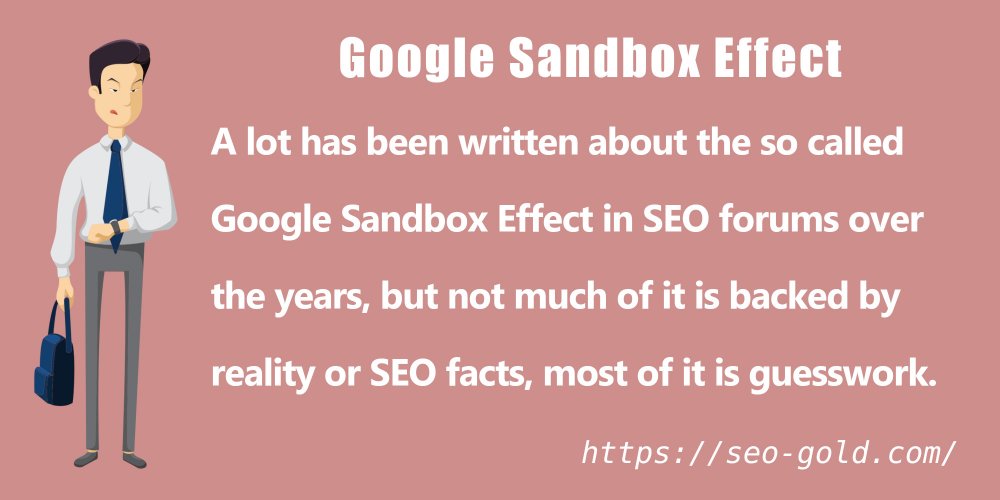
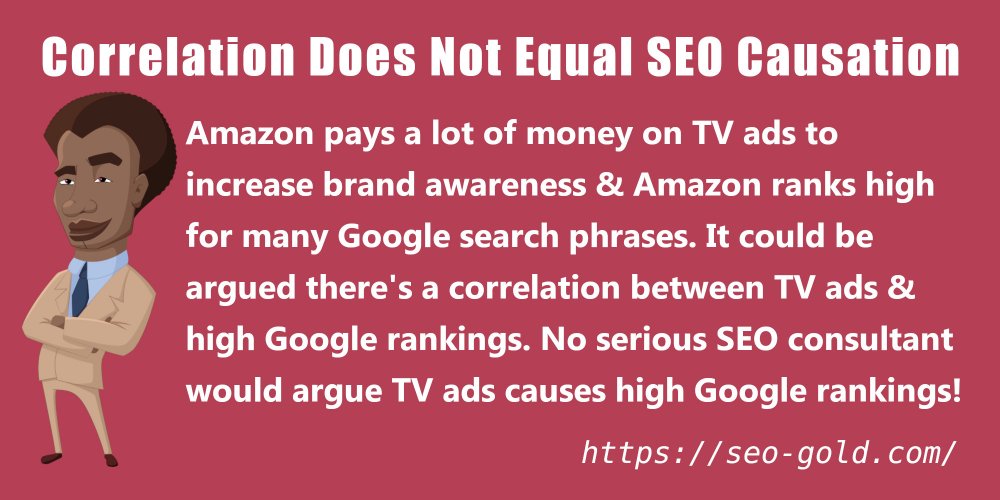
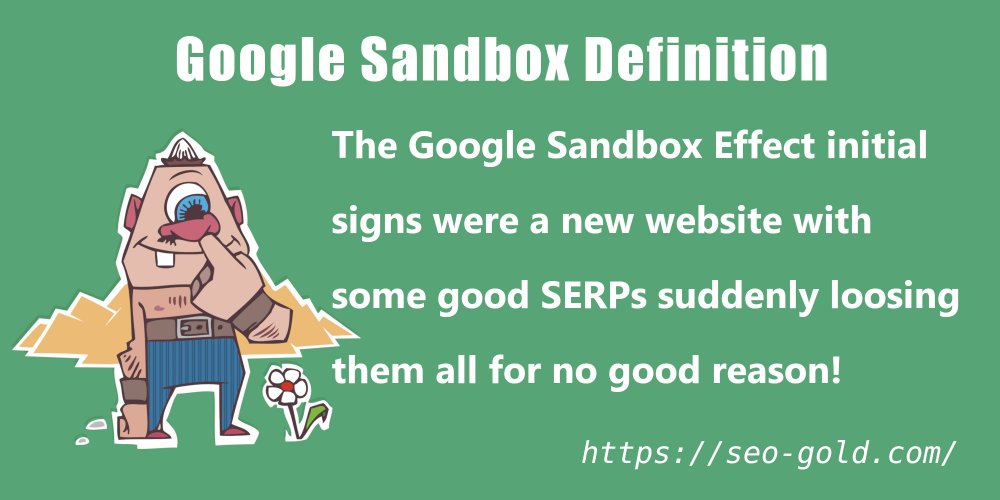
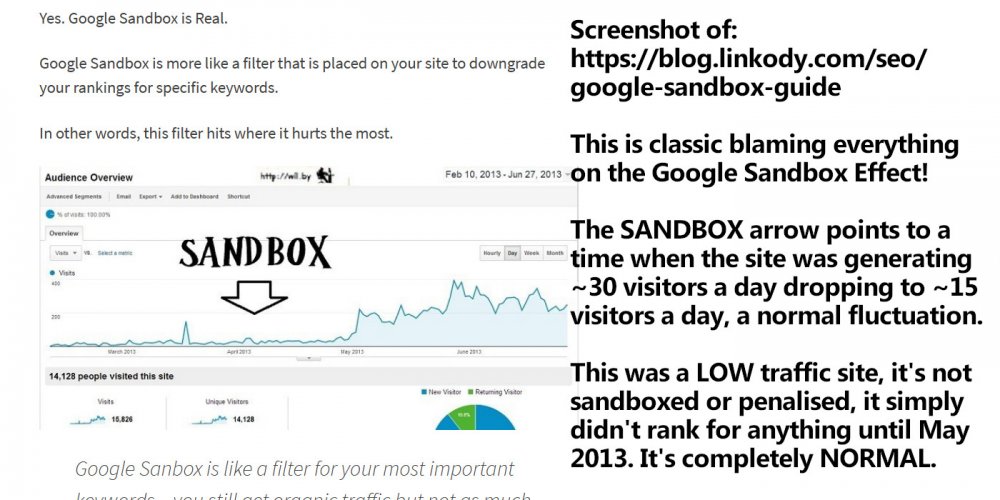


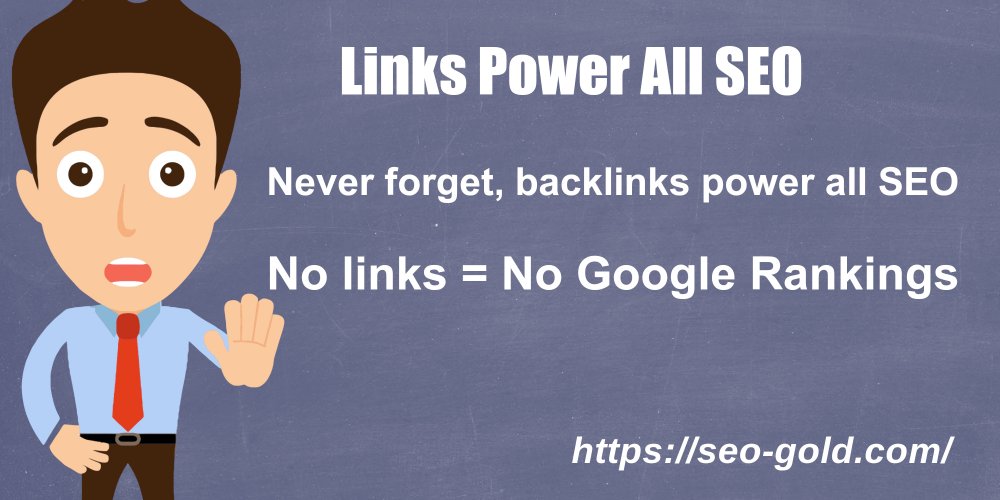
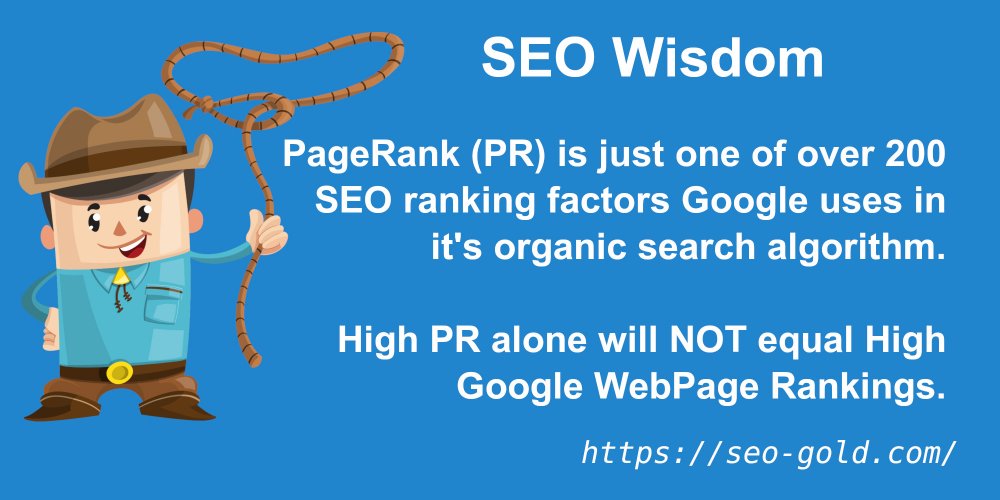
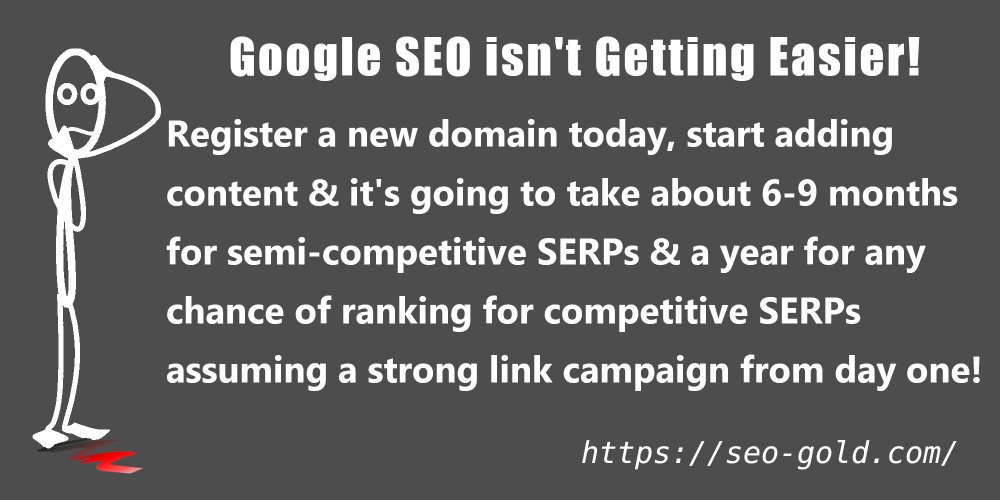



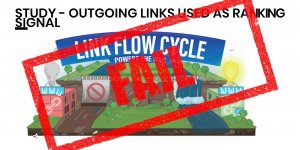



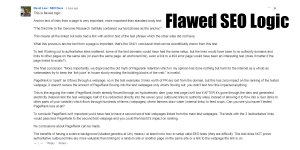


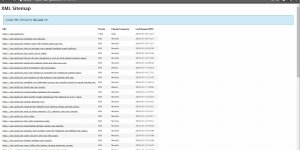
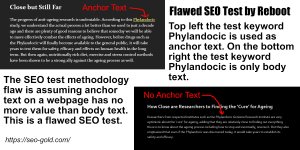

Thanks for the information on the Google sandbox effect. We have a new site and I think we have been Google sandboxed.
When I first started the site, we started getting SERP to the first page! Then after the Google algorithm change during July 2007, we lost all of our first page SERPs.
Thanks for the explanation!
I hope we can figure out how to get out of the Google sandbox and quickly!
I don’t think google sandbox exists. Ya google try to pull down the new domain in serp. The same thing not applicable with the old domain. The reason is backlinks. The old domains has relevant backlinks. If we starts seo on a new domain and increase the backlinks very fast google again penalize the new website.
I’m pretty sure it does exist. I guess patience is the key.
I can confirm the sandbox effect, I was 4th in a competitive search in G, and bought a high pagerank link for the same term, then my 4th became 70+th and still waiting for it to recover…
I don’t think that Google has a sandbox these days. I have a lot of new sites(3 – 6 months) that rank in the top 10 results for high competition keywords. I make hundreds of links every day for all of my domains and i have no problems at all because the links are not indexed the same day.
Also (New Sites = Poor Results) that became known as the Sandbox effect and had controversial definitions, does not exist anymore (in my opinion). Matt Cutts confirmed the sandbox existed, somewhat, in his Coffee Talk with Brett Tabke 7 years ago. But since then, they did not discuss it much.
Yes, new sites have to wait for at least 3 to 6 months to rank in Google.
Hi, thanks for the great article!
i can confirm the sandbox effect, because my site wasn’t indexed for almost one week. though i registered the site in the google webmaster tools. i think its also very important to have relevant keywords, which people often search for.